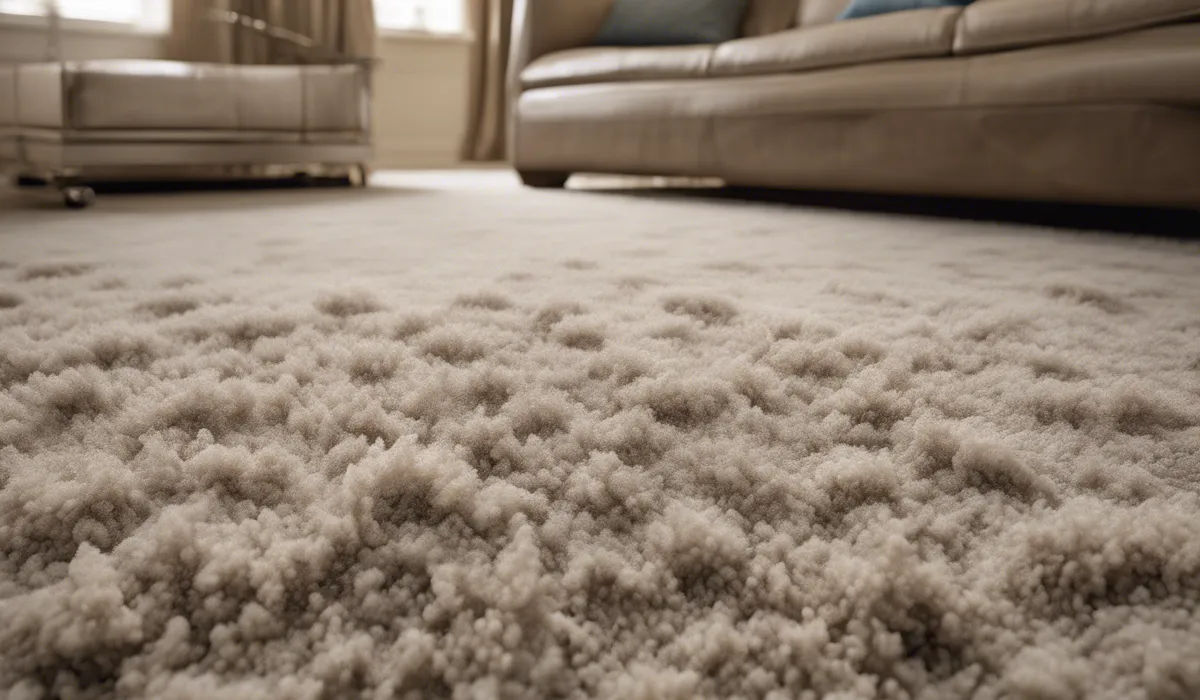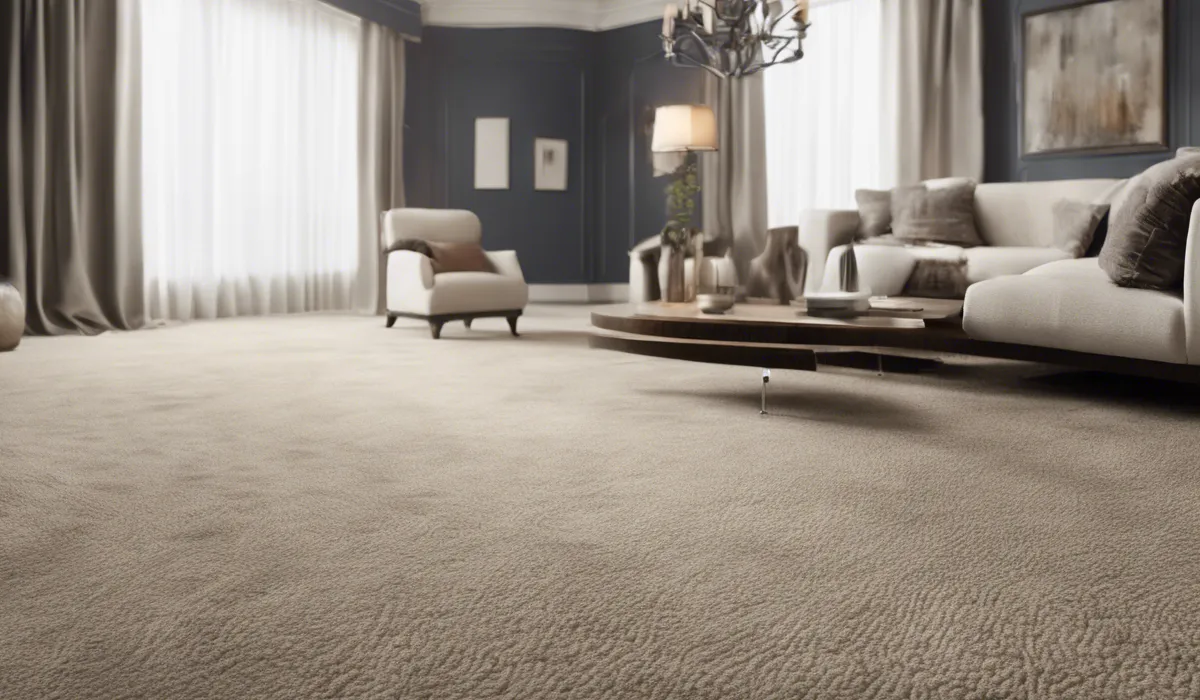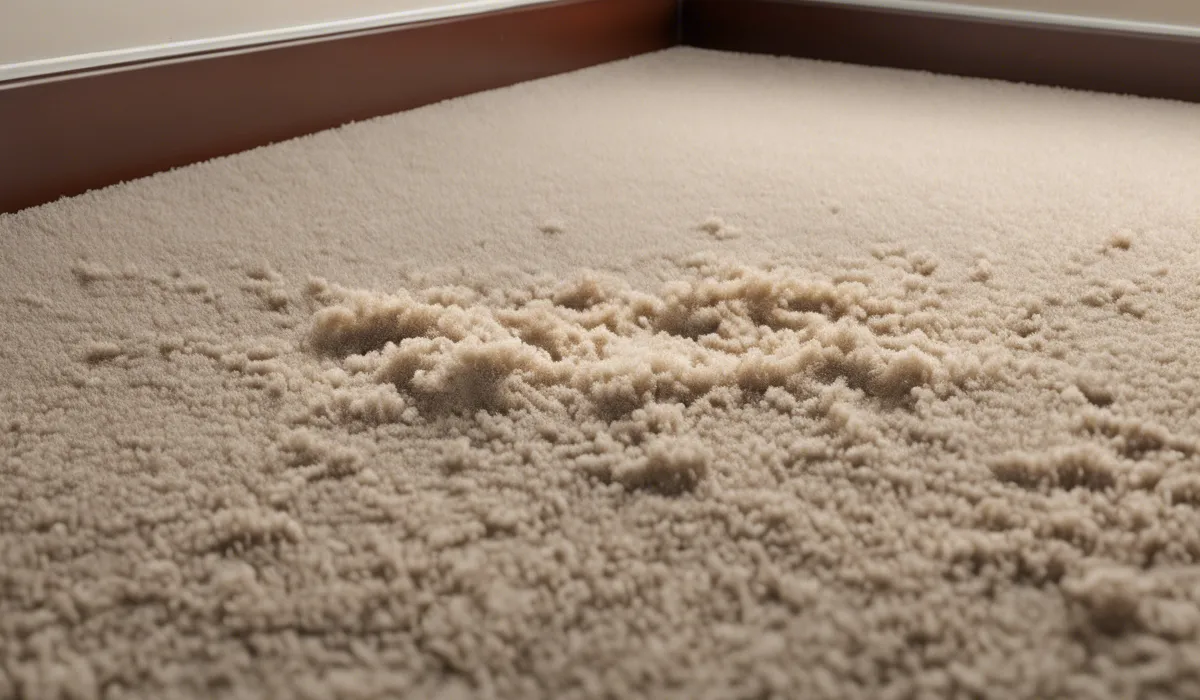Mold in carpet often appears as discolored patches, ranging from white to black, green, or red. It may look fuzzy or slimy and can cause a musty odor. The affected area may also feel damp or spongy underfoot.
Identification of Mold in Carpet

Appearance of Mold in Carpets
Mold in carpets can take on various colors, making it sometimes tricky to identify. These colors can range from black, white, and green to brown.
Each color can indicate a different type of mold, with black mold being particularly notorious for its health risks.
The texture of mold can also vary; it might appear fuzzy, resembling small cotton patches, or slimy if the mold is thriving in a particularly moist environment.
Some molds have a thread-like structure, spreading across the carpet in a web-like pattern. These visual cues are often the first signs of mold growth in your carpet.
Common Signs of Mold Presence
A musty odor is one of the most noticeable signs of mold in carpets. It’s a distinctive smell that can linger and often leads to investigating its source.
People living in mold-affected areas may experience an increase in allergy symptoms, such as sneezing, itchy eyes, or a runny nose.
Additionally, mold in carpets can lead to visible growth patterns and discoloration, creating a patchwork of damage that not only looks unattractive but can also be harmful to health.
Differences Between Mold and Other Carpet Stains
Mold is not the only cause of stains on carpets. However, unlike food or drink spills, mold stains often have irregular edges and may not change much after cleaning attempts.
While regular stains typically fade with proper cleaning, mold stains and the musty odor persist.
Additionally, mold tends to flourish when environmental conditions change, such as increased humidity or temperature, which isn’t the case for non-mold stains.
Causes and Risk Factors of Carpet Mold

Sources of Moisture and Water Damage
Moisture is the primary catalyst for mold growth in carpets. This moisture can come from various sources, such as flooding due to heavy rains, accidental spills, or high humidity in the environment.
Leaky pipes, overflowing washing machines, or any malfunctioning appliances that allow water to seep into the carpet can also contribute to the problem.
A consistent source of moisture creates an ideal breeding ground for mold.
Carpet Material and Mold Susceptibility
The type of carpet fibers can greatly affect how susceptible your carpet is to mold. Synthetic fibers often resist mold better than organic materials, which can provide food for mold.
Carpet padding, which lies beneath the carpet, can also retain moisture and is often overlooked during cleaning, making it a common place for mold to grow undetected.
Environmental Conditions Conducive to Mold Growth
Mold favors warm, damp environments with little to no sunlight. When carpets are in areas with poor ventilation, high humidity levels, or consistent dampness without exposure to sunlight, it creates a perfect environment for mold to thrive.
Ensuring that these conditions are not met is key in preventing mold from taking hold in your carpets.
Prevention and Remediation of Carpet Mold

Cleaning and Maintenance Techniques
Regular cleaning is essential in the fight against carpet mold. Vacuuming can remove spores from the surface, and deep cleaning practices, such as steam cleaning, can help eliminate mold growth deep within the fibers.
Proper drying after these cleaning processes is crucial, as leftover moisture could counteract all your efforts by providing a new breeding ground for mold.
Mold Prevention Strategies
To prevent mold from growing in your carpet, manage the humidity levels in your home with dehumidifiers and maintain clean air with air purifiers.
Choosing carpets with mold-resistant materials and underlays can also greatly reduce the risk of mold developing in your home.
These preventative measures not only protect your carpets but also contribute to a healthier living space.
Professional Mold Removal
When mold takes hold, sometimes the best course of action is to call in the professionals. Experts in mold assessment and removal can determine the extent of the issue and recommend the best course of action.
The process of professional mold remediation may involve removing the affected carpet, treating the area to kill any remaining mold, and restoring the space to its original condition, safe from the dangers of mold.
FAQs About Mold in Carpet Appearance
What are the common colors of mold found in carpets?
Mold in carpets can appear in various colors, including white, black, green, or red.
What texture does mold on a carpet typically have?
Mold on carpets may look fuzzy or slimy, indicating active growth.
How can I tell if my carpet has mold by touch?
If the carpet feels damp or spongy underfoot, it may be affected by mold.
Does mold in carpets produce any odor?
Yes, mold growth in carpets can cause a musty odor.
What does mold look like when it first starts to grow on carpets?
Initially, mold on carpets can appear as small, discolored patches that may go unnoticed.
Final Thoughts
Mold in carpets typically manifests as discolored patches with hues that vary from white to black, including greens and reds.
These spots may have a fuzzy or slimy appearance and are often accompanied by a musty smell. When stepping on these areas, they might feel damp or have a spongy texture, indicating the presence of mold growth.
